Care Home Washroom Refurbishment
As a nursing home or care home owner, providing a safe and comfortable environment for your residents is of the utmost importance. One aspect of this is ensuring that your washrooms, bathrooms and toilets are up to standard by meeting the specific needs of your residents. Refurbishing these areas can provide various benefits, such as improved hygiene and sanitation, increased safety and accessibility, and enhanced residents’ comfort and privacy. However, care home washroom refurbishment presents unique challenges in these areas. Washrooms, bathrooms and toilets are a critical aspect of any care home environment, and ensuring that they are safe, comfortable, and accessible for residents is essential. Refurbishing the washrooms to modern standards can provide many benefits, including improved hygiene and sanitation, increased safety and accessibility, and enhanced comfort and privacy for residents.
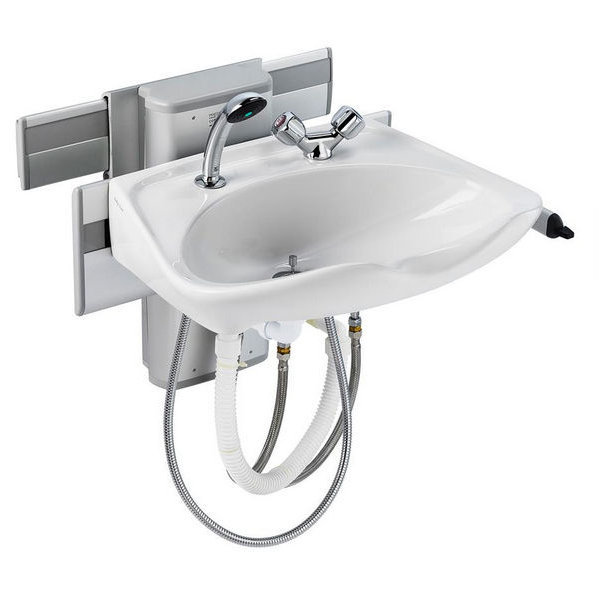
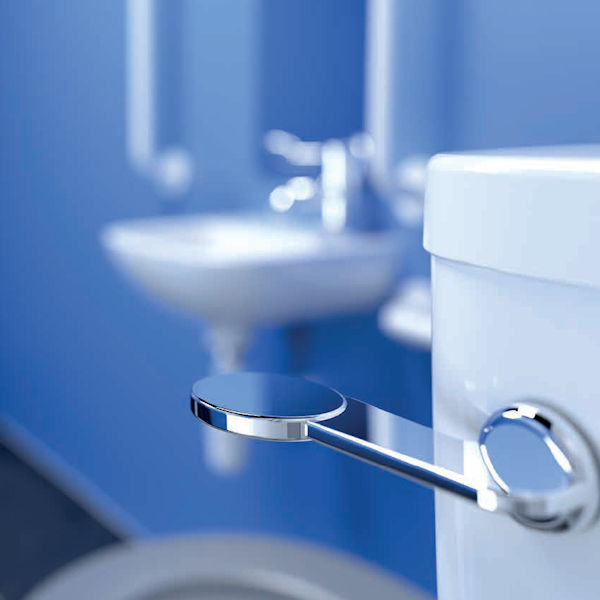
But designing a new bathroom, washroom, or toilet area for a care home presents unique challenges, including accessibility and mobility requirements, compliance with local building codes and regulations, and the need to consider the specific needs of residents, such as those with dementia or end of life care needs. As a nursing home owner, it’s crucial to prioritise safety and accessibility in these areas. One way to ensure this is by installing handrails, bath seats, and non-slip bath mats in contrasting colours to aid those with poor eyesight. Additionally, it’s essential to pay attention to the thermostat settings for hot water to prevent scalding, especially for residents with dementia who may forget to check the temperature. This small but vital consideration will help create a safe and comfortable environment for all residents.
Preventing accidents and ensuring safety will always be a priority, with care home washrooms being a particularly hazardous area. It’s crucial to consider all sanitary wear as a potential hazard and mitigate any dangers before they arise.
Where a bath is available, install special bath plugs that automatically drain water if the bathtub becomes too full. Traditional flood detectors may not be enough, as, by the time they detect a flood, the situation can already be dangerous, creating a slipping hazard on the floor.
Pictured: Nova-Flo is a mechanically-operated flood prevention device that shuts off the water supply to a bathtub or sink as soon as the water level reaches the overflow. No electrical power is needed and it operates discreetly, resetting automatically once the taps are turned off. Ideal for preventing bathroom floods, it is widely used by hotels, care homes, landlords, property owners, and tenants, especially busy parents with kids who play in the bath.
You can find out more about the Nova Flow system here.
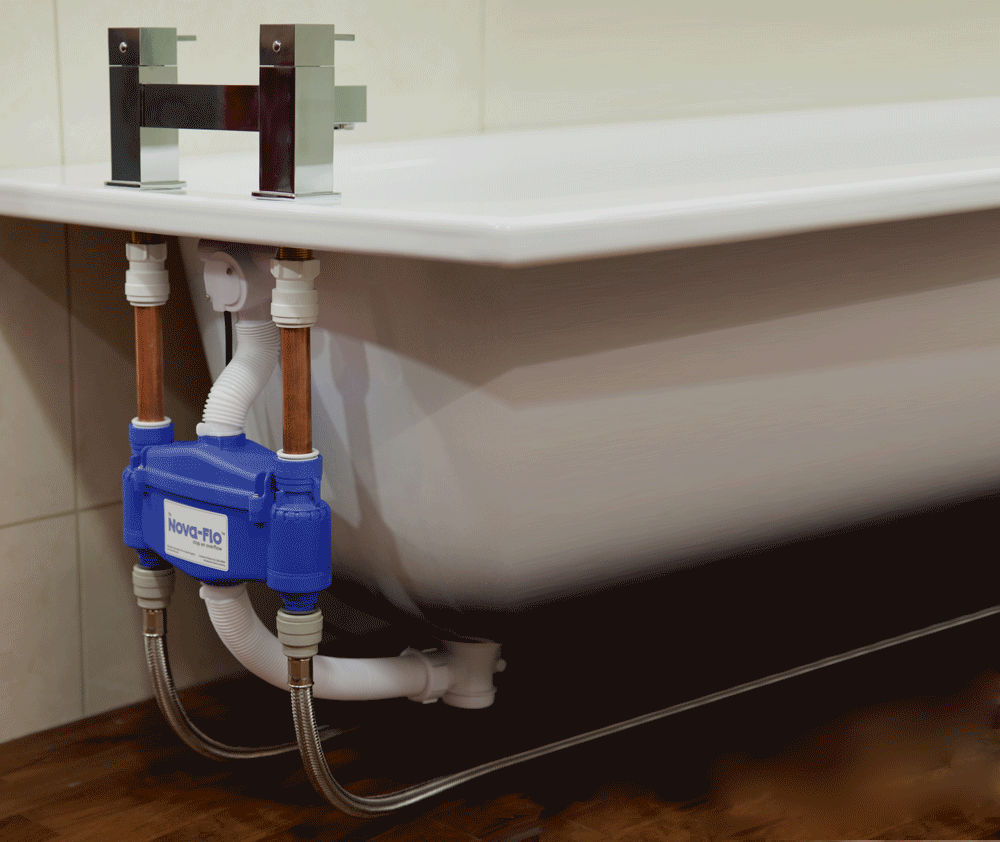
When designing and decorating the bathrooms in a care home, it’s crucial to create a warm and inviting atmosphere. Instead of opting for a clinical, hospital-like look, choose a visually appealing design that is easy on the eyes. The design is especially important for residents with dementia, as they may have difficulty finding and remembering where items are stored. Using open shelving to display items such as toothpaste, brushes, and shampoo can make it easier for them to locate what they need. Additionally, it is crucial to consider lighting and ensure that it is bright enough to make it easy for residents to see what they need to use.
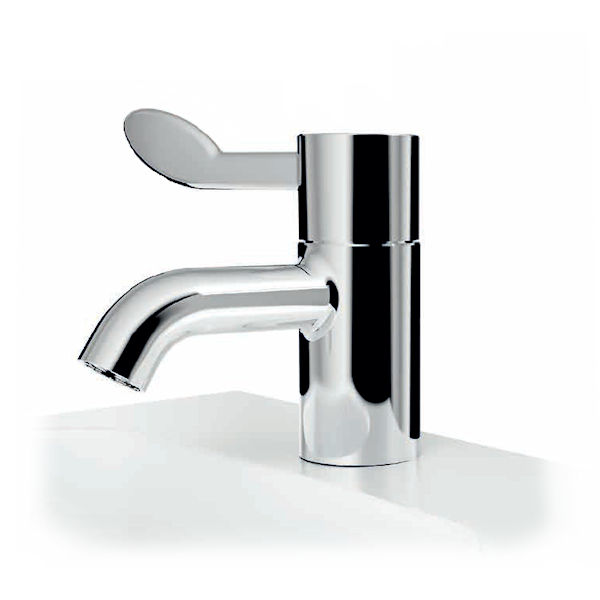
Whether it’s shower or bath time, residents should be confident that safety measures built into the design ensure a comfortable and enjoyable bathing experience with the water temperature regulated to prevent scalding risk. Equally, where a bath is preferred, the depth of the water should be appropriate for the individual’s needs.
Providing clear and easy-to-use taps is essential for ensuring that residents with dementia can still have control over their own bathing experience. Traditional-style taps with options for separate hot and cold taps are a good choice, as they are simple and easy to operate, with clear indications of which is hot and which is cold. This allows residents to control the temperature of the water. And though a small thing in the life of a non-disabled person, it certainly adds to the sense of autonomy for those requiring additional support.
Picture: The Armitage Shanks Contour 21+ TMV3
- Extended lever for closed fist operation
- Built in thermastatic control helps prevet scalding
Where required, assistive technology can be beneficial to ensure a safe and comfortable experience. Consider the flooring in the bathroom and use non-slip materials to reduce the risk of slips and falls, which can be especially concerning for those with dementia. Rather than relying on bath mats, consider using a non-slip flooring surface that blends in with the bathroom’s overall design. Colour science is vital in all interior design, so choose a non-slip flooring finish that creates a cohesive and visually pleasing design.
The images show how a person with impaired vision will see the room. It demonstrates the significant difference contrasting colours can make. The brightness of colour can be measured using Light Reflectance Value (LRV), which ranges from 0 for black to 100 for white. The Building Regulations recommend a difference of 30 LRV points for optimal contrast. Various colours with different LRV scores are available, including red, intense colour for differentiation, particularly for those with dementia. This allows for contrasting toilet seats and handrails, making washrooms easier to use and demonstrating a commitment to finding new ways to improve daily living.
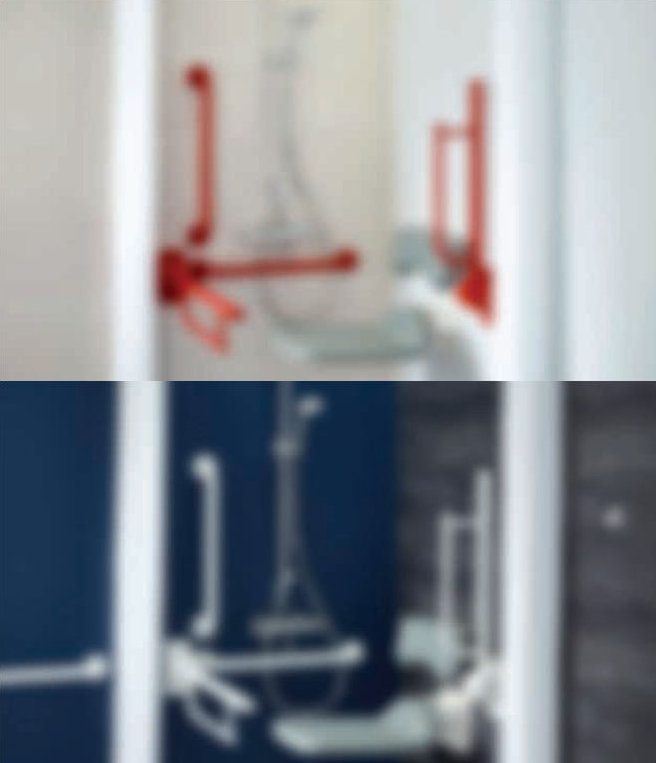
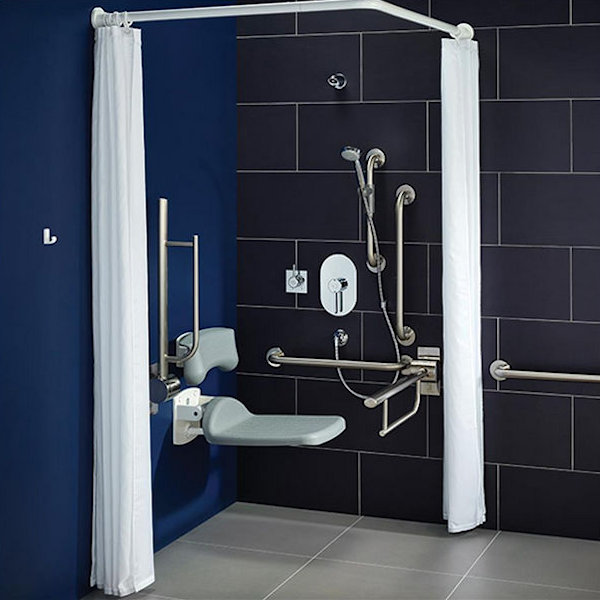
Showers should be easy to access and feature straightforward controls. Reflections from glass shower doors and panels can be disorienting for individuals with dementia, so consider covering them with a contrasting-coloured towel or curtain. Avoid patterns that may be visually confusing.
To ensure easy visibility and accessibility for residents with dementia, soap and toothbrush holders in the washroom should be of contrasting colours to the sink. Alternatively, you can use different coloured soaps or face towels for contrast. To prevent flooding, consider using an automatic sink plug designed to sense when the water level in a sink reaches a certain point and automatically open a drain to allow the water to drain away. A great safeguard should a resident forget to turn off a tap.
Toilets should be clearly labelled and easy to locate. Use door signs that are at an appropriate height for older individuals and make them visible from multiple angles. Toilet seats should be a different colour than the toilet bowl to aid recognition. Some recommend adding colour to the toilet water to help with identification. Lighting in the toilet should be bright, but avoid creating glare. Cisterns should be traditional in appearance, and if using a push-button design, include clear signage. Toilet roll holders or paper should be easily accessible and a different colour than the walls. Consider the design of the toilet paper dispenser and choose one that is easy to use.
En-suite bathrooms can be designed to promote independence and safety for residents. Low-level lighting or movement sensors that automatically turn on the light when the person gets out of bed can help improve visibility without disturbing sleep. Toilets should be visible from the bedhead position to allow residents to move between the bed and bathroom on their own during the night, promoting dignity and self-care.

Care Home washroom Refurbishment:
The Importance of Working with a Specialist
When appointing a contractor to carry out your care home washroom refurbishment, working with a company with experience and expertise in this specialised field is essential. Here at Grayson Trade, we have a specialist team who, over many years, has gained a deep understanding of the unique needs and challenges of care home environments and will be able to provide solutions tailored to the specific needs of each facility.
Images for this article are used with kind permission from:
Interested in carrying out a care home washroom refurbishment in your facility? If you have a project you’d like to discuss with us, feel free to get in touch, we’d love to help.
Call us on 01902 595 145 for more information.
